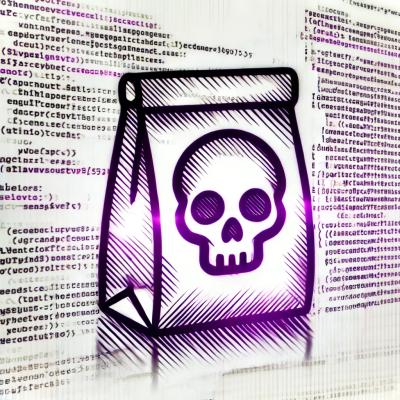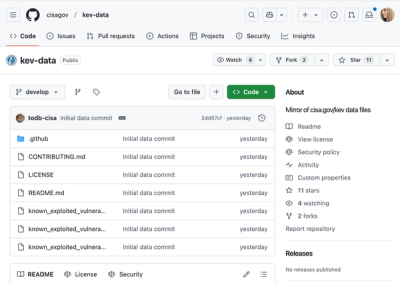
Security News
PyPI’s New Archival Feature Closes a Major Security Gap
PyPI now allows maintainers to archive projects, improving security and helping users make informed decisions about their dependencies.
azure-ai-contentsafety
Advanced tools
Azure AI Content Safety detects harmful user-generated and AI-generated content in applications and services. Content Safety includes text and image APIs that allow you to detect material that is harmful:
Various documentation is available to help you get started
pip install azure-ai-contentsafety
You can find the endpoint for your Azure AI Content Safety service resource using the Azure Portal or Azure CLI:
# Get the endpoint for the Azure AI Content Safety service resource
az cognitiveservices account show --name "resource-name" --resource-group "resource-group-name" --query "properties.endpoint"
To use an API key as the credential parameter.
Step 1: Get the API key. The API key can be found in the Azure Portal or by running the following Azure CLI command:
az cognitiveservices account keys list --name "<resource-name>" --resource-group "<resource-group-name>"
Step 2: Pass the key as a string into an instance of AzureKeyCredential.
from azure.core.credentials import AzureKeyCredential
from azure.ai.contentsafety import ContentSafetyClient, BlocklistClient
endpoint = "https://<my-custom-subdomain>.cognitiveservices.azure.com/"
credential = AzureKeyCredential("<api_key>")
content_safety_client = ContentSafetyClient(endpoint, credential)
blocklist_client = BlocklistClient(endpoint, credential)
Step 1: Enable Microsoft Entra ID for your resource. Please refer to this document Authenticate with Microsoft Entra ID for the steps to enable Microsoft Entra ID for your resource.
The main steps are:
Step 2: Set the values of the client ID, tenant ID, and client secret of the Microsoft Entra application as environment variables: AZURE_CLIENT_ID, AZURE_TENANT_ID, AZURE_CLIENT_SECRET.
DefaultAzureCredential will use the values from these environment variables.
from azure.identity import DefaultAzureCredential
from azure.ai.contentsafety import ContentSafetyClient, BlocklistClient
endpoint = "https://<my-custom-subdomain>.cognitiveservices.azure.com/"
credential = DefaultAzureCredential()
content_safety_client = ContentSafetyClient(endpoint, credential)
blocklist_client = BlocklistClient(endpoint, credential)
There are different types of analysis available from this service. The following table describes the currently available APIs.
| Feature | Description |
|---|---|
| Text Analysis API | Scans text for sexual content, violence, hate, and self-harm with multi-severity levels. |
| Image Analysis API | Scans images for sexual content, violence, hate, and self-harm with multi-severity levels. |
| Text Blocklist Management APIs | The default AI classifiers are sufficient for most content safety needs. However, you might need to screen for terms that are specific to your use case. You can create blocklists of terms to use with the Text API. |
Content Safety recognizes four distinct categories of objectionable content.
| Category | Description |
|---|---|
| Hate | Hate and fairness-related harms refer to any content that attacks or uses pejorative or discriminatory language with reference to a person or identity group based on certain differentiating attributes of these groups including but not limited to race, ethnicity, nationality, gender identity and expression, sexual orientation, religion, immigration status, ability status, personal appearance, and body size. |
| Sexual | Sexual describes language related to anatomical organs and genitals, romantic relationships, acts portrayed in erotic or affectionate terms, pregnancy, physical sexual acts, including those portrayed as an assault or a forced sexual violent act against one's will, prostitution, pornography, and abuse. |
| Violence | Violence describes language related to physical actions intended to hurt, injure, damage, or kill someone or something; describes weapons, guns and related entities, such as manufacturers, associations, legislation, and so on. |
| Self-harm | Self-harm describes language related to physical actions intended to purposely hurt, injure, damage one's body or kill oneself. |
Classification can be multi-labeled. For example, when a text sample goes through the text moderation model, it could be classified as both Sexual content and Violence.
Every harm category the service applies also comes with a severity level rating. The severity level is meant to indicate the severity of the consequences of showing the flagged content.
Text: The current version of the text model supports the full 0-7 severity scale. By default, the response will output 4 values: 0, 2, 4, and 6. Each two adjacent levels are mapped to a single level. Users could use "outputType" in request and set it as "EightSeverityLevels" to get 8 values in output: 0,1,2,3,4,5,6,7. You can refer text content severity levels definitions for details.
Image: The current version of the image model supports the trimmed version of the full 0-7 severity scale. The classifier only returns severities 0, 2, 4, and 6; each two adjacent levels are mapped to a single level. You can refer image content severity levels definitions for details.
Following operations are supported to manage your text blocklist:
You can set the blocklists you want to use when analyze text, then you can get blocklist match result from returned response.
The following section provides several code snippets covering some of the most common Content Safety service tasks, including:
Please refer to sample data for the data used here. For more samples, please refer to samples.
import os
from azure.ai.contentsafety import ContentSafetyClient
from azure.ai.contentsafety.models import TextCategory
from azure.core.credentials import AzureKeyCredential
from azure.core.exceptions import HttpResponseError
from azure.ai.contentsafety.models import AnalyzeTextOptions
key = os.environ["CONTENT_SAFETY_KEY"]
endpoint = os.environ["CONTENT_SAFETY_ENDPOINT"]
# Create a Content Safety client
client = ContentSafetyClient(endpoint, AzureKeyCredential(key))
# Construct a request
request = AnalyzeTextOptions(text="You are an idiot")
# Analyze text
try:
response = client.analyze_text(request)
except HttpResponseError as e:
print("Analyze text failed.")
if e.error:
print(f"Error code: {e.error.code}")
print(f"Error message: {e.error.message}")
raise
print(e)
raise
hate_result = next(item for item in response.categories_analysis if item.category == TextCategory.HATE)
self_harm_result = next(item for item in response.categories_analysis if item.category == TextCategory.SELF_HARM)
sexual_result = next(item for item in response.categories_analysis if item.category == TextCategory.SEXUAL)
violence_result = next(item for item in response.categories_analysis if item.category == TextCategory.VIOLENCE)
if hate_result:
print(f"Hate severity: {hate_result.severity}")
if self_harm_result:
print(f"SelfHarm severity: {self_harm_result.severity}")
if sexual_result:
print(f"Sexual severity: {sexual_result.severity}")
if violence_result:
print(f"Violence severity: {violence_result.severity}")
import os
from azure.ai.contentsafety import ContentSafetyClient
from azure.core.credentials import AzureKeyCredential
from azure.ai.contentsafety.models import AnalyzeTextOptions
from azure.core.exceptions import HttpResponseError
key = os.environ["CONTENT_SAFETY_KEY"]
endpoint = os.environ["CONTENT_SAFETY_ENDPOINT"]
# Create a Content Safety client
client = ContentSafetyClient(endpoint, AzureKeyCredential(key))
blocklist_name = "TestBlocklist"
input_text = "I h*te you and I want to k*ll you."
try:
# After you edit your blocklist, it usually takes effect in 5 minutes, please wait some time before analyzing with blocklist after editing.
analysis_result = client.analyze_text(
AnalyzeTextOptions(text=input_text, blocklist_names=[blocklist_name], halt_on_blocklist_hit=False)
)
if analysis_result and analysis_result.blocklists_match:
print("\nBlocklist match results: ")
for match_result in analysis_result.blocklists_match:
print(
f"BlocklistName: {match_result.blocklist_name}, BlockItemId: {match_result.blocklist_item_id}, "
f"BlockItemText: {match_result.blocklist_item_text}"
)
except HttpResponseError as e:
print("\nAnalyze text failed: ")
if e.error:
print(f"Error code: {e.error.code}")
print(f"Error message: {e.error.message}")
raise
print(e)
raise
import os
from azure.ai.contentsafety import ContentSafetyClient
from azure.ai.contentsafety.models import ImageCategory
from azure.core.credentials import AzureKeyCredential
from azure.core.exceptions import HttpResponseError
from azure.ai.contentsafety.models import AnalyzeImageOptions, ImageData
key = os.environ["CONTENT_SAFETY_KEY"]
endpoint = os.environ["CONTENT_SAFETY_ENDPOINT"]
image_path = os.path.abspath(os.path.join(os.path.abspath(__file__), "..", "./sample_data/image.jpg"))
# Create a Content Safety client
client = ContentSafetyClient(endpoint, AzureKeyCredential(key))
# Build request
with open(image_path, "rb") as file:
request = AnalyzeImageOptions(image=ImageData(content=file.read()))
# Analyze image
try:
response = client.analyze_image(request)
except HttpResponseError as e:
print("Analyze image failed.")
if e.error:
print(f"Error code: {e.error.code}")
print(f"Error message: {e.error.message}")
raise
print(e)
raise
hate_result = next(item for item in response.categories_analysis if item.category == ImageCategory.HATE)
self_harm_result = next(item for item in response.categories_analysis if item.category == ImageCategory.SELF_HARM)
sexual_result = next(item for item in response.categories_analysis if item.category == ImageCategory.SEXUAL)
violence_result = next(item for item in response.categories_analysis if item.category == ImageCategory.VIOLENCE)
if hate_result:
print(f"Hate severity: {hate_result.severity}")
if self_harm_result:
print(f"SelfHarm severity: {self_harm_result.severity}")
if sexual_result:
print(f"Sexual severity: {sexual_result.severity}")
if violence_result:
print(f"Violence severity: {violence_result.severity}")
import os
from azure.ai.contentsafety import BlocklistClient
from azure.ai.contentsafety.models import TextBlocklist
from azure.core.credentials import AzureKeyCredential
from azure.core.exceptions import HttpResponseError
key = os.environ["CONTENT_SAFETY_KEY"]
endpoint = os.environ["CONTENT_SAFETY_ENDPOINT"]
# Create a Blocklist client
client = BlocklistClient(endpoint, AzureKeyCredential(key))
blocklist_name = "TestBlocklist"
blocklist_description = "Test blocklist management."
try:
blocklist = client.create_or_update_text_blocklist(
blocklist_name=blocklist_name,
options=TextBlocklist(blocklist_name=blocklist_name, description=blocklist_description),
)
if blocklist:
print("\nBlocklist created or updated: ")
print(f"Name: {blocklist.blocklist_name}, Description: {blocklist.description}")
except HttpResponseError as e:
print("\nCreate or update text blocklist failed: ")
if e.error:
print(f"Error code: {e.error.code}")
print(f"Error message: {e.error.message}")
raise
print(e)
raise
import os
from azure.ai.contentsafety import BlocklistClient
from azure.core.credentials import AzureKeyCredential
from azure.core.exceptions import HttpResponseError
key = os.environ["CONTENT_SAFETY_KEY"]
endpoint = os.environ["CONTENT_SAFETY_ENDPOINT"]
# Create a Blocklist client
client = BlocklistClient(endpoint, AzureKeyCredential(key))
try:
blocklists = client.list_text_blocklists()
if blocklists:
print("\nList blocklists: ")
for blocklist in blocklists:
print(f"Name: {blocklist.blocklist_name}, Description: {blocklist.description}")
except HttpResponseError as e:
print("\nList text blocklists failed: ")
if e.error:
print(f"Error code: {e.error.code}")
print(f"Error message: {e.error.message}")
raise
print(e)
raise
import os
from azure.ai.contentsafety import BlocklistClient
from azure.core.credentials import AzureKeyCredential
from azure.core.exceptions import HttpResponseError
key = os.environ["CONTENT_SAFETY_KEY"]
endpoint = os.environ["CONTENT_SAFETY_ENDPOINT"]
# Create a Blocklist client
client = BlocklistClient(endpoint, AzureKeyCredential(key))
blocklist_name = "TestBlocklist"
try:
blocklist = client.get_text_blocklist(blocklist_name=blocklist_name)
if blocklist:
print("\nGet blocklist: ")
print(f"Name: {blocklist.blocklist_name}, Description: {blocklist.description}")
except HttpResponseError as e:
print("\nGet text blocklist failed: ")
if e.error:
print(f"Error code: {e.error.code}")
print(f"Error message: {e.error.message}")
raise
print(e)
raise
import os
from azure.ai.contentsafety import BlocklistClient
from azure.core.credentials import AzureKeyCredential
from azure.core.exceptions import HttpResponseError
key = os.environ["CONTENT_SAFETY_KEY"]
endpoint = os.environ["CONTENT_SAFETY_ENDPOINT"]
# Create a Blocklist client
client = BlocklistClient(endpoint, AzureKeyCredential(key))
blocklist_name = "TestBlocklist"
try:
client.delete_text_blocklist(blocklist_name=blocklist_name)
print(f"\nDeleted blocklist: {blocklist_name}")
except HttpResponseError as e:
print("\nDelete blocklist failed:")
if e.error:
print(f"Error code: {e.error.code}")
print(f"Error message: {e.error.message}")
raise
print(e)
raise
import os
from azure.ai.contentsafety import BlocklistClient
from azure.ai.contentsafety.models import AddOrUpdateTextBlocklistItemsOptions, TextBlocklistItem
from azure.core.credentials import AzureKeyCredential
from azure.core.exceptions import HttpResponseError
key = os.environ["CONTENT_SAFETY_KEY"]
endpoint = os.environ["CONTENT_SAFETY_ENDPOINT"]
# Create a Blocklist client
client = BlocklistClient(endpoint, AzureKeyCredential(key))
blocklist_name = "TestBlocklist"
block_item_text_1 = "k*ll"
block_item_text_2 = "h*te"
block_items = [TextBlocklistItem(text=block_item_text_1), TextBlocklistItem(text=block_item_text_2)]
try:
result = client.add_or_update_blocklist_items(
blocklist_name=blocklist_name, options=AddOrUpdateTextBlocklistItemsOptions(blocklist_items=block_items)
)
for block_item in result.blocklist_items:
print(
f"BlockItemId: {block_item.blocklist_item_id}, Text: {block_item.text}, Description: {block_item.description}"
)
except HttpResponseError as e:
print("\nAdd block items failed: ")
if e.error:
print(f"Error code: {e.error.code}")
print(f"Error message: {e.error.message}")
raise
print(e)
raise
import os
from azure.ai.contentsafety import BlocklistClient
from azure.core.credentials import AzureKeyCredential
from azure.core.exceptions import HttpResponseError
key = os.environ["CONTENT_SAFETY_KEY"]
endpoint = os.environ["CONTENT_SAFETY_ENDPOINT"]
# Create a Blocklist client
client = BlocklistClient(endpoint, AzureKeyCredential(key))
blocklist_name = "TestBlocklist"
try:
block_items = client.list_text_blocklist_items(blocklist_name=blocklist_name)
if block_items:
print("\nList block items: ")
for block_item in block_items:
print(
f"BlockItemId: {block_item.blocklist_item_id}, Text: {block_item.text}, "
f"Description: {block_item.description}"
)
except HttpResponseError as e:
print("\nList block items failed: ")
if e.error:
print(f"Error code: {e.error.code}")
print(f"Error message: {e.error.message}")
raise
print(e)
raise
import os
from azure.ai.contentsafety import BlocklistClient
from azure.core.credentials import AzureKeyCredential
from azure.ai.contentsafety.models import TextBlocklistItem, AddOrUpdateTextBlocklistItemsOptions
from azure.core.exceptions import HttpResponseError
key = os.environ["CONTENT_SAFETY_KEY"]
endpoint = os.environ["CONTENT_SAFETY_ENDPOINT"]
# Create a Blocklist client
client = BlocklistClient(endpoint, AzureKeyCredential(key))
blocklist_name = "TestBlocklist"
block_item_text_1 = "k*ll"
try:
# Add a blockItem
add_result = client.add_or_update_blocklist_items(
blocklist_name=blocklist_name,
options=AddOrUpdateTextBlocklistItemsOptions(blocklist_items=[TextBlocklistItem(text=block_item_text_1)]),
)
if not add_result or not add_result.blocklist_items or len(add_result.blocklist_items) <= 0:
raise RuntimeError("BlockItem not created.")
block_item_id = add_result.blocklist_items[0].blocklist_item_id
# Get this blockItem by blockItemId
block_item = client.get_text_blocklist_item(blocklist_name=blocklist_name, blocklist_item_id=block_item_id)
print("\nGet blockitem: ")
print(
f"BlockItemId: {block_item.blocklist_item_id}, Text: {block_item.text}, Description: {block_item.description}"
)
except HttpResponseError as e:
print("\nGet block item failed: ")
if e.error:
print(f"Error code: {e.error.code}")
print(f"Error message: {e.error.message}")
raise
print(e)
raise
import os
from azure.ai.contentsafety import BlocklistClient
from azure.core.credentials import AzureKeyCredential
from azure.ai.contentsafety.models import (
TextBlocklistItem,
AddOrUpdateTextBlocklistItemsOptions,
RemoveTextBlocklistItemsOptions,
)
from azure.core.exceptions import HttpResponseError
key = os.environ["CONTENT_SAFETY_KEY"]
endpoint = os.environ["CONTENT_SAFETY_ENDPOINT"]
# Create a Blocklist client
client = BlocklistClient(endpoint, AzureKeyCredential(key))
blocklist_name = "TestBlocklist"
block_item_text_1 = "k*ll"
try:
# Add a blockItem
add_result = client.add_or_update_blocklist_items(
blocklist_name=blocklist_name,
options=AddOrUpdateTextBlocklistItemsOptions(blocklist_items=[TextBlocklistItem(text=block_item_text_1)]),
)
if not add_result or not add_result.blocklist_items or len(add_result.blocklist_items) <= 0:
raise RuntimeError("BlockItem not created.")
block_item_id = add_result.blocklist_items[0].blocklist_item_id
# Remove this blockItem by blockItemId
client.remove_blocklist_items(
blocklist_name=blocklist_name, options=RemoveTextBlocklistItemsOptions(blocklist_item_ids=[block_item_id])
)
print(f"\nRemoved blockItem: {add_result.blocklist_items[0].blocklist_item_id}")
except HttpResponseError as e:
print("\nRemove block item failed: ")
if e.error:
print(f"Error code: {e.error.code}")
print(f"Error message: {e.error.message}")
raise
print(e)
raise
Azure AI Content Safety client library will raise exceptions defined in Azure Core. Error codes are defined as below:
| Error Code | Possible reasons | Suggestions |
|---|---|---|
| InvalidRequestBody | One or more fields in the request body do not match the API definition. | 1. Check the API version you specified in the API call. 2. Check the corresponding API definition for the API version you selected. |
| InvalidResourceName | The resource name you specified in the URL does not meet the requirements, like the blocklist name, blocklist term ID, etc. | 1. Check the API version you specified in the API call. 2. Check whether the given name has invalid characters according to the API definition. |
| ResourceNotFound | The resource you specified in the URL may not exist, like the blocklist name. | 1. Check the API version you specified in the API call. 2. Double check the existence of the resource specified in the URL. |
| InternalError | Some unexpected situations on the server side have been triggered. | 1. You may want to retry a few times after a small period and see it the issue happens again. 2. Contact Azure Support if this issue persists. |
| ServerBusy | The server side cannot process the request temporarily. | 1. You may want to retry a few times after a small period and see it the issue happens again. 2.Contact Azure Support if this issue persists. |
| TooManyRequests | The current RPS has exceeded the quota for your current SKU. | 1. Check the pricing table to understand the RPS quota. 2.Contact Azure Support if you need more QPS. |
This library uses the standard logging library for logging.
Basic information about HTTP sessions (URLs, headers, etc.) is logged at INFO level.
Detailed DEBUG level logging, including request/response bodies and unredacted headers, can be enabled on the client or per-operation with the logging_enable keyword argument.
See full SDK logging documentation with examples here.
Optional keyword arguments can be passed in at the client and per-operation level. The azure-core reference documentation describes available configurations for retries, logging, transport protocols, and more.
For more extensive documentation on Azure Content Safety, see the Azure AI Content Safety on docs.microsoft.com.
This project welcomes contributions and suggestions. Most contributions require you to agree to a Contributor License Agreement (CLA) declaring that you have the right to, and actually do, grant us the rights to use your contribution. For details, visit https://cla.microsoft.com.
When you submit a pull request, a CLA-bot will automatically determine whether you need to provide a CLA and decorate the PR appropriately (e.g., label, comment). Simply follow the instructions provided by the bot. You will only need to do this once across all repos using our CLA.
This project has adopted the Microsoft Open Source Code of Conduct. For more information, see the Code of Conduct FAQ or contact opencode@microsoft.com with any additional questions or comments.
FAQs
Microsoft Azure AI Content Safety Client Library for Python
We found that azure-ai-contentsafety demonstrated a healthy version release cadence and project activity because the last version was released less than a year ago. It has 1 open source maintainer collaborating on the project.
Did you know?

Socket for GitHub automatically highlights issues in each pull request and monitors the health of all your open source dependencies. Discover the contents of your packages and block harmful activity before you install or update your dependencies.

Security News
PyPI now allows maintainers to archive projects, improving security and helping users make informed decisions about their dependencies.

Research
Security News
Malicious npm package postcss-optimizer delivers BeaverTail malware, targeting developer systems; similarities to past campaigns suggest a North Korean connection.

Security News
CISA's KEV data is now on GitHub, offering easier access, API integration, commit history tracking, and automated updates for security teams and researchers.